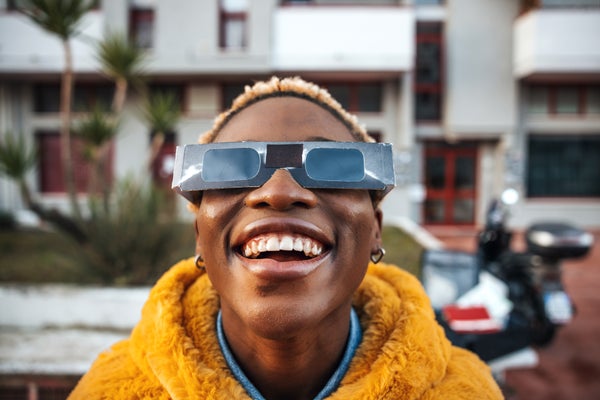How Do Solar Eclipse Glasses Work?
Solar eclipse glasses prevent catastrophic eye damage when observing the sun. Here’s how they work
Solar eclipse glasses are a must when looking at a partial solar eclipse.
LeoPatrizi/Getty Images
This article is part of a special report on the total solar eclipse that will be visible from parts of the U.S., Mexico and Canada on April 8, 2024.
In the U.S., April’s total solar eclipse will travel across a 115-mile-wide band stretching from Texas to Maine. And even those who can’t make it into this “path of totality” can view some of the spectacle because, outside of this zone, the sun will be partially obscured from the vantage point of every state in the contiguous U.S.
To safely view that partial solar eclipse—and the partial eclipse phases that will occur before and after totality during the total solar eclipse—you’ll need some kind of eclipse glasses. These are extra-dark shades that block almost all light, protecting your retinas from damage while you observe the sun.
On supporting science journalism
If you’re enjoying this article, consider supporting our award-winning journalism by subscribing. By purchasing a subscription you are helping to ensure the future of impactful stories about the discoveries and ideas shaping our world today.
This protection is extremely important because looking directly at the sun without protection can permanently damage the eye within a matter of seconds, says Ninel Gregori, a spokesperson for the American Academy of Ophthalmology and an ophthalmologist at the University of Miami. “When looking directly at the sun, you are at risk for solar retinopathy, or retinal burns caused by high-intensity light,” she says.
The retina is the light-sensing layer at the back of the eyeball. When it is stimulated by different wavelengths of light, light-detecting cells called rods and cones release chemical signals, which in turn trigger electric signals that travel…
Read the full article here







